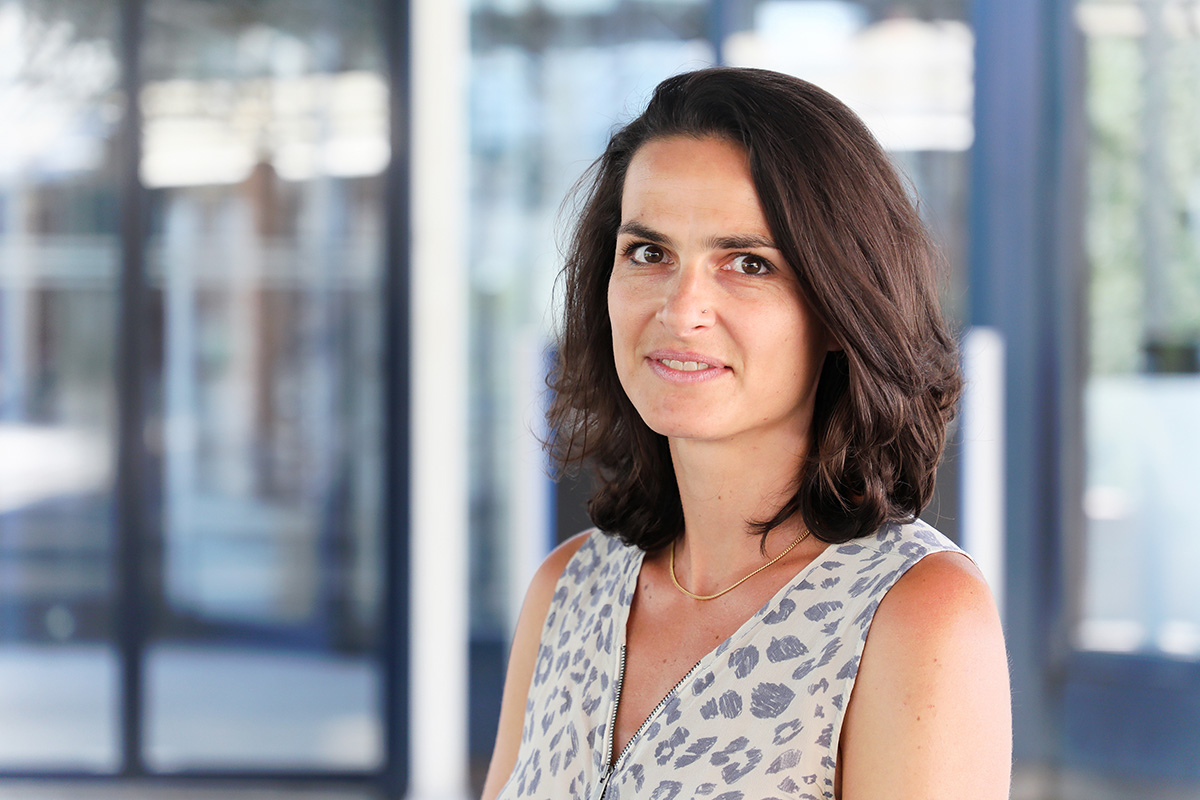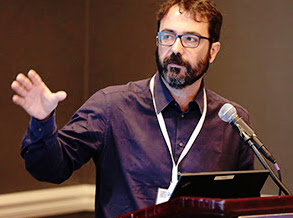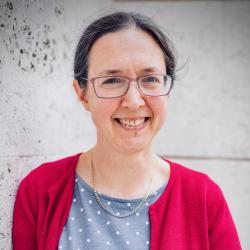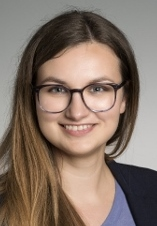IEEE Benelux Photonics Chapter
Annual Symposium 2022
24-25 November 2022,
Eindhoven University of Technology, The Netherlands
Welcome to the website of the 26th annual Symposium of the IEEE Photonics Benelux Chapter, which will be held at the Eindhoven University of Technology, The Netherlands.
As in previous editions, we have an exciting and interesting scientific program, consisting of invited speakers who will present the topic of photonics from different applications, research and entrepreneurial perspectives.
Parallel sections of contributing papers, as well as two poster sessions will be set with ample opportunity for interaction and networking.
Moreoveor, the 6th "IEEE Women in Photonics" event will be organized just before the Symposium (free), as well as PhD Student activities (free) - in the morning of the 1st Symposium day.
On behalf of the organizing committee, we am glad to welcome you to the symposium in the city of Eindhoven!
dr. Patty Stabile
dr. Yuqing Jiao
The symposium is honoured to introduce the following invited speakers:
Prof. Camille Sophie Brès
EPFL, Switzerland
Bio: Camille-Sophie Brès is an associate professor at EPFL in the institute of Electrical Engineering. She received her bachelor degree with honors in electrical engineering from McGill University, Canada, in 2002. She obtained her PhD in electrical engineering from Princeton University, USA in 2007. After a post-doctoral position at the University of California San Diego she joined EPFL as a tenure track professor and director of the Photonic Systems Laboratory in 2011. Her work focusses on leveraging and enhancing nonlinear processes in optical waveguides for the optimization of all-optical signal processing, light generation and sensing by exploiting dispersion engineering, material properties, and architectural features. She was awarded the early career Women in Photonics Award from the European Optical Society in 2016, as well as ERC starting (2012), Consolidator (2017) and Proof of Concept (2019) grants.
Title of the talk: “Non-linear optics in Si3N4 waveguides”
Abstract:
Nonlinear optics describes the behaviour of light in a nonlinear medium, exploiting higher orders of the material susceptibility. It allows us to, for example, change the colour of a light beam, change its shape or process light with light. Nonlinear optical phenomena are the basis of many devices used in optical communication systems, optical sensing or material research and enable a wide range of novel applications, and the need for the integration of nonlinear functionalities to the chip scale is evident.
It is now well established that silicon nitride offers many advantages for integrated nonlinear photonics. Pushed by recent progress in fabrication, we now have access to very low loss waveguides while maintaining large flexibility in terms of dispersion engineering, both essential for the design of efficient nonlinear systems. As such many nonlinear optical demonstrations, mainly based on 3rd order effects in the telecom band, have been performed. Pushing the applications over the entire accessible spectral range of silicon nitride, from the visible to the middle infrared, as well as offering completely new horizon of applications by inducing effective 2nd-order effects, would provide new and essential elements to the nonlinear integrated photonic toolbox. In this talk I will quickly review work based on the inherent 3rd order effects, and we then cover how we can leverage all-optical poling to enhance the typically weak 2nd-order nonlinearities of the platform.
Prof. Claudio Conti
SAPIENZA Università di Roma, Italy
Bio: Prof. Claudio Conti is Director of the Institute for Complex Systems of the National Research Council (ISC-CNR) and Head of the Nonlinear Photonics Laboratory at the Department of Physics at the University Sapienza in Rome (IT). He authored more than 200 articles in photonics, nonlinear and complex systems. Website www.complexlight.org
Title of the talk: “Photonic extreme learning machines and Scalable Spin-Glass Optical Simulator”
Abstract:
Which is the simplest and photonic way to encode and process information at a large scale? The modern technology of spatial light modulators enables direct access and control of millions of pixels. A single light beam can store all these data by a single reflection. Millions of bytes are parallelly processed at the speed of light as the beam propagates and interacts with materials and nanostructured devices. Modern paradigms of machine learning allow exploiting this unprecedented flux of information. A new generation of optical processors, neural networks, and measurement devices is emerging and shifting how we are used to conceiving data processing and experiments. I will introduce the basic idea of modern spatial optical computing and show examples of photonic accelerators for large-scale combinatorial optimization and machine learning, including the challenging natural language processing.
Prof. Rachel A. Oliver
University of Cambridge, UK
Bio: Rachel Oliver received her MEng (2000) and PhD (2003) degrees from the University of Oxford, UK. She then moved to Cambridge as a Research Fellow at Peterhouse College, and later won a prestigious Royal Society University Research Fellowship. In 2011, she took up her permanent academic position at the University of Cambridge and she is currently Professor of Materials Science and Director of the Cambridge Centre for Gallium Nitride. She held a Leverhulme Senior Research Fellowship in 2015-2016 and delivered the Rank Prize Lecture in Photonics in 2018. She was one of the Women in Engineering Society’s Top 50 Women in Engineering in 2020 and was elected a Fellow of the Royal Academy of Engineering in 2021.
Rachel’s research focusses on understanding how the small scale structure of nitride materials effects the performance and properties of devices. She uses expertise in microscopy and materials growth to develop new nanoscale nitride structures which will provide new functionality to the devices of the future. She was the first to apply atom probe tomography to nitride materials, developed the first InGaN-based single photon source, and most recently has patented novel methods compatible with large scale manufacturing for the porosification of nitride materials. She is a founder and Chief Scientific Officer of Poro Technologies Ltd, a University spinout company exploiting her group’s research on porous nitrides, and hence developing novel red microLEDs.
Rachel is also a passionate advocate for increased equality, diversity and inclusion in science and engineering and a founder member of The Inclusion Group for Equity in Research in STEMM (TIGERS). She is an Equality and Diversity Champion for the University of Cambridge School of Physical Sciences and has addressed the Parliamentary and Scientific Committee on equity issues.
Title of the talk: “Nitrides for quantum light sources”
Abstract:
A quantum light source is a device that can generate one single photon – or an entangled pair of photons - on demand. Whilst a single photon emitter would be pretty useless as a car headlight or bedside lamp, these devices are in increasing demand for new developments in optical communication which might exploit fundamental principles of quantum physics to achieve data security. Linear optical quantum computation, precision optical measurement and even random number generation also present potential applications opportunities for such light sources.
However, many of the most mature quantum light sources operate at temperatures only accessible using liquid helium, at best inconvenient and at worst prohibitive for applications. Exploiting nitride semiconductors allows device concepts developed in the more conventional arsenide semiconductor family to be applied, but whilst arsenide devices are limited to cryogenic temperatures, nitride devices can operate at temperatures accessible using on-chip, Peltier cooling, and in some cases even at room temperature.
Unfortunately, working with these less mature semiconductors has its pitfalls: high densities of defects and the impact of internal electric fields can limit device performance. For example, the wavelength of emission from nitride single photon emitters wanders with time, which is not compatible with applications which demand resonance of the emitter with a cavity or (more stringently) the emission of indistinguishable photons. Nitrides crystals grown in unusual orientations can overcome these challenges whilst maintaining good temperature stability, providing new opportunities for real-world quantum technologies.
Dr. Kasia Balakier
The European Centre for Space Applications and Telecommunications (ECSAT),
European Space Agency (ESA)
Bio: Kasia Balakier is Space Segment Engineer in Telecommunications and Integrated Applications Directorate at European Space Agency (ESA). She has a role of Technical Officer on multiple projects implementing photonics technology for satellite communication. Prior to that she was a Lecturer in Photonics at University College London (UCL). In addition to her academic career, she was a Senior System Engineer and Expert in Telecom Payload Photonics at Airbus Defence and Space, where she worked on the development and implementation of photonics systems for telecommunication and Earth observation satellites.
Kasia received her PhD in photonics from UCL. She was awarded a Marie Skłodowska-Curie fellowship and UK Research and Innovation (UKRI) Fellowship to support her research in integrated microwave photonics for space. Prior to joining UCL, she worked as Optical Engineer at SENER Ingeniería y Sistemas in Spain and R&D Engineer at LG Electronics in Poland and South Korea.
Title of the talk: “Photonic devices and systems for satellite communication”
Abstract:
The implementation of optical and photonics technologies for satellite communication has been investigated over the last decades. The European Space Agency (ESA) has been actively supporting these developments, resulting in numerous successful demonstrations. For example, European Data Relay Satellite System (EDRS) allowed to demonstrate that free space optical communication over hundreds of kilometres is not only technically possibly but can also be used to provide a commercial service. It has been demonstrated that satellite optical communication has the potential to outperform RF communication links in terms data throughput per individual link due to availability of large optical spectrum. The ongoing development of High thRoughput Optical Network (HydRON) aims at creating high capacity optical network in space. However, the current challenges limiting greater photonics technology implementation require addressing the efficiency and scalability of photonics devices as well as their packaging techniques which need to be suitable for harsh space environment. Photonic Integrated Circuits (PICs) are often perceived as the key enabling technology which can be considered for both inter-satellite communication as well as intra-satellite connectivity. Moreover, PICs are paving the way to enable the next generation of quantum sources and detectors required by QKD secured satellite links.
IEEE Photonics Benelux Annual Symposium 2022
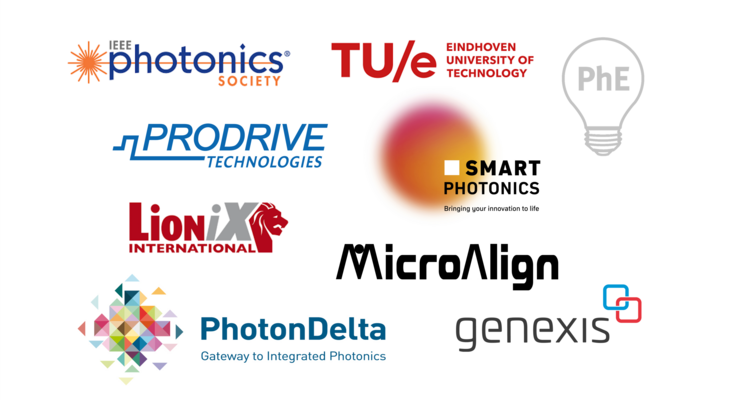 Registration website for IEEE Photonics Benelux Annual Symposium 2022
Registration website for IEEE Photonics Benelux Annual Symposium 2022dr. Patty Stabiler.stabile@tue.nl
dr. Patty Stabiler.stabile@tue.nlhttps://www.aanmelder.nl/ieee-ps-benelux-2022
2022-11-24
2022-11-25
OfflineEventAttendanceMode
EventScheduled
IEEE Photonics Benelux Annual Symposium 2022IEEE Photonics Benelux Annual Symposium 20220.00EUROnlineOnly2019-01-01T00:00:00Z
Eindhoven University of Technology - Auditorium BuildingEindhoven University of Technology - Auditorium BuildingDe Zaale 5612 AZ Eindhoven Netherlands

